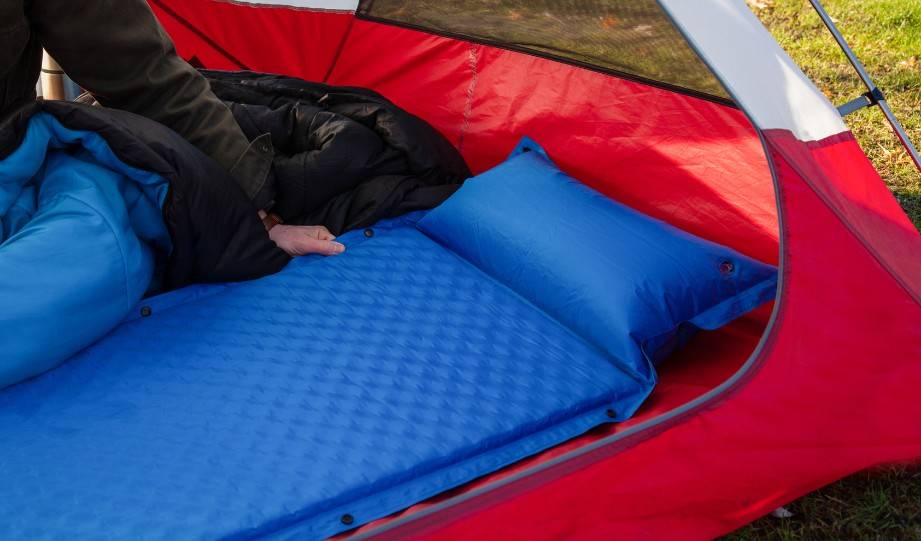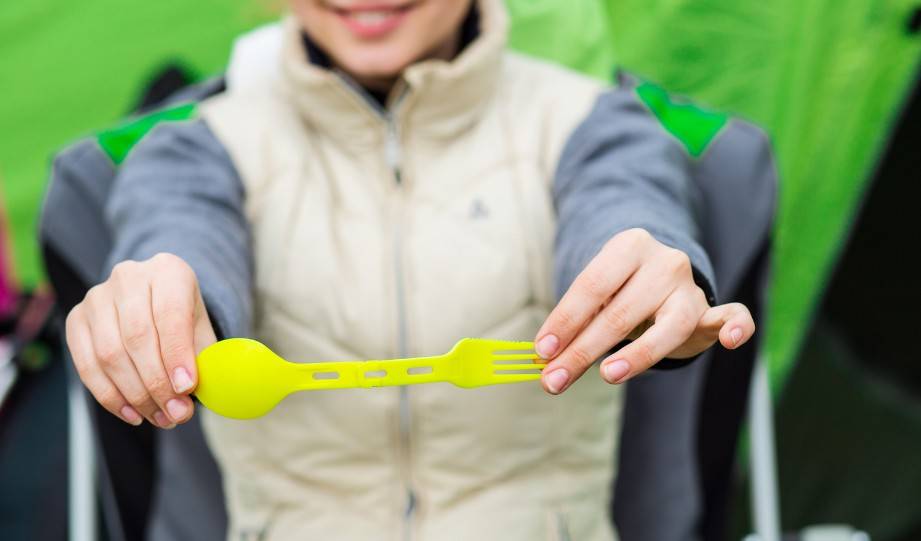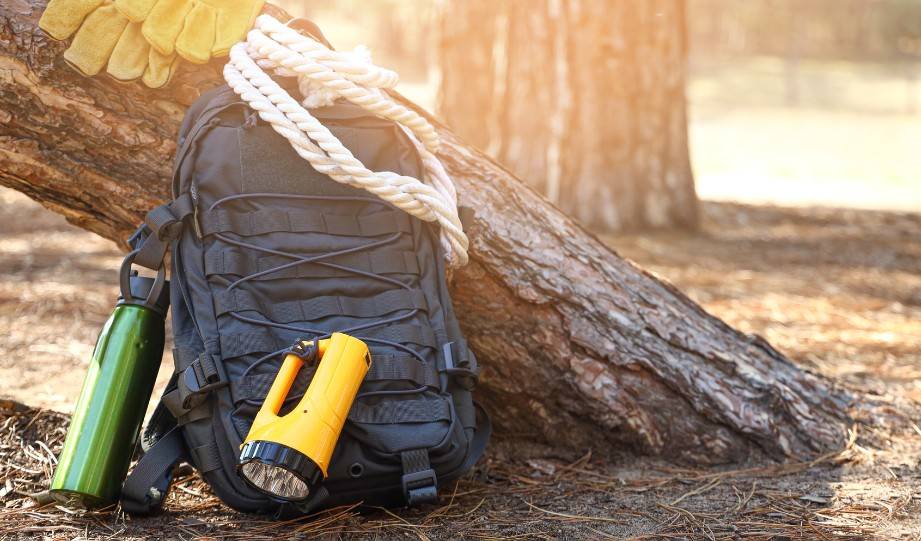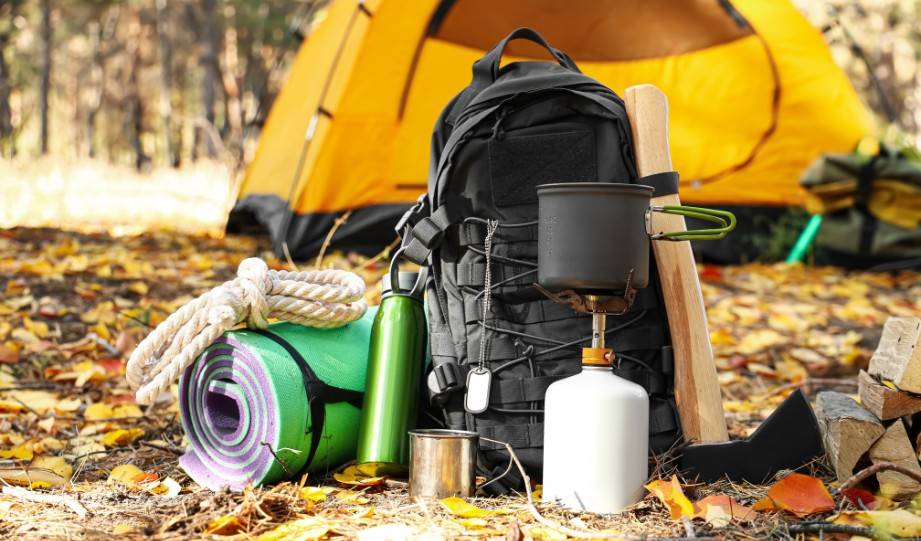The first time I truly understood the importance of sustainable camping was during a solo trip in the Sierra Nevada.
Surrounded by untouched wilderness, I was struck by the delicate balance between nature and our presence within it. This experience was a wake-up call about the impact my camping gear and habits had on the environment.
In this article, I’ll guide you through creating a low-impact camping kit. It’s not just about minimizing your footprint; it’s about ensuring the great outdoors remains pristine for future adventurers.
Let’s embark on this journey together, towards more sustainable and responsible camping practices.
Principles of Low-Impact Camping
Low-impact camping is grounded in the Leave No Trace (LNT) principles, a set of guidelines designed to help outdoor enthusiasts minimize their environmental footprint. These principles are not just rules but a way of thinking about our interaction with nature.
By adopting these practices, we ensure that the great outdoors remains undisturbed and beautiful for everyone.
Plan Ahead and Prepare
Proper planning is the cornerstone of minimizing your impact. This means researching the area you’ll be visiting, understanding local regulations, and preparing for extreme weather.
For example, knowing the local wildlife can help you store your food correctly to avoid attracting animals.
Travel and Camp on Durable Surfaces
Stick to established trails and campsites. The goal is to avoid damaging untouched natural areas.
When choosing a campsite, look for durable ground like rock, sand, or dry grasses.
Dispose of Waste Properly
Pack out what you pack in. This includes all trash, leftover food, and litter.
Biodegradable soaps and eco-friendly camping gear play a crucial role here, as they reduce the potential harm to the environment when disposing of wastewater.
Leave What You Find
Preserve the natural environment by not taking rocks, plants, or other natural objects.
Similarly, avoid building structures or digging trenches. The beauty of nature is best left as it is for others to enjoy.
Minimize Campfire Impact
Campfires can cause long-lasting impacts on the environment.
Use a lightweight stove for cooking and enjoy a candle lantern instead of a fire if it’s not essential.
If you must have a fire, use established fire rings and keep fires small.
Respect Wildlife
Observe wildlife from a distance and never feed them.
Feeding wildlife damages their health, alters natural behaviors, and exposes them to predators and other dangers.
Be Considerate of Other Visitors
Keep noise levels down and respect other visitors’ experience. Remember, the wilderness is a shared resource.
Essential Components of a Low-Impact Camping Kit
Shelter and Bedding
Creating a low-impact camping kit starts with choosing sustainable shelter and bedding options.
These components are crucial, not only for ensuring a comfortable night’s sleep but also for minimizing your environmental footprint.
Tents

When selecting a tent, look for options made from recycled materials or those certified by environmental standards.
Eco-friendly camping gear often features tents designed to be durable and repairable, reducing the need to replace them frequently.
Brands like Big Agnes and REI Co-op offer tents made with these principles in mind, focusing on sustainability without compromising quality.
Sleeping Bags

Eco-conscious campers should seek sleeping bags filled with ethically sourced down or synthetic materials made from recycled plastic.
Companies such as Patagonia and North Face have committed to ethical sourcing and environmental responsibility, providing sleeping bags that are not only warm and comfortable but also kind to the planet.
Sleeping Pads

A good sleeping pad is essential for insulation and comfort. Look for pads made from sustainable materials or those that have a low environmental manufacturing impact.
Therm-a-Rest, for example, offers pads using eco-friendly materials and production methods, ensuring your camping kit is both comfortable and sustainable.
Cooking and Eating Utensils
For the eco-conscious camper, selecting the right cooking and eating utensils is pivotal to maintaining a low-impact on the environment.
Eco-friendly cooking gear not only reduces waste but also enhances your camping experience by aligning with sustainable practices.
Cooking Gear

Opt for lightweight, durable cookware made from sustainable materials.
Brands like GSI Outdoors offer pots and pans crafted from recycled metals, ensuring longevity and reducing the need for frequent replacements.
Embrace the use of a portable stove, which minimizes the impact on the environment compared to traditional campfires.
This alternative is crucial in areas where fires are prohibited or during dry seasons when the risk of forest fires is high.
Eating Utensils

Reusable utensils are a must-have in your low-impact camping kit.
Materials like bamboo offer a biodegradable option that’s both lightweight and sturdy.
Companies such as Light My Fire and UCO specialize in eco-friendly utensils and dishware, designed to be used repeatedly without harming the environment.
Cleaning Up
Biodegradable soaps are essential for cleaning your cookware and utensils without leaving harmful residues in natural water sources.
Always remember to carry water away from streams or lakes for washing, minimizing the ecological footprint of your campsite.
Waste Management
Effective waste management is a cornerstone of low-impact camping, ensuring that we leave our natural surroundings as pristine as we found them.
By adopting a meticulous approach to handling trash, recycling, and composting, campers can significantly reduce their environmental footprint.
Trash
Always pack out what you pack in. This means carrying your trash with you until you can dispose of it properly.
Portable waste containers, such as reusable trash sacks or compactable bins, are invaluable for keeping your campsite clean and minimizing odors that might attract wildlife.
Brands like Sea to Summit offer lightweight, durable options perfect for any camping trip.
Recycling
Separating recyclables from trash is just as important in the wilderness as it is at home.
Consider bringing along separate bags or containers to store recyclables until you can dispose of them properly. This practice not only reduces waste but also encourages responsible consumption habits.
Composting
For biodegradable waste like food scraps, a portable compost bag can be a game-changer.
These bags allow you to carry out compostable materials without attracting animals or creating odors. Once home, these can be added to your compost bin, returning nutrients to the soil and completing the cycle of sustainability.
Personal Hygiene Products
Maintaining personal hygiene while camping doesn’t mean you have to compromise on your environmental values.
Opting for biodegradable soaps, shampoos, and other personal care products ensures that you can stay clean without leaving a harmful footprint in nature.
Biodegradable Soaps

These are specially formulated to break down naturally in the environment, minimizing impact on water sources and soil.
Whether you’re washing your hands, dishes, or bathing, using biodegradable soaps ensures that the natural balance of ecosystems is maintained.
Brands like Dr. Bronner’s offer a range of eco-friendly soaps that are safe for outdoor use.
Shampoos and Conditioners

Like soaps, there are biodegradable options for hair care. Look for products that are free from harmful chemicals and packaged in recyclable or compostable materials.
Not only do these products keep your hair clean, but they also protect wildlife and plant life from exposure to toxins.
Other Personal Care Products
From toothpaste to deodorant, there are eco-conscious choices for all your personal care needs.
Seek out items that have minimal packaging, are made from natural ingredients, and are designed to be earth-friendly.

Read More:
Tips for Preparing and Packing Your Low-Impact Kit

Efficiently preparing and packing your low-impact camping kit is essential for minimizing waste and reducing your environmental footprint.
Here are strategies to pack smart and light, ensuring that you carry only what you need without compromising on the essentials.
1. Start with a Checklist
Before you pack, create a checklist of necessary items based on your destination, the length of your trip, and expected weather conditions.
This helps avoid last-minute additions that can weigh you down and lead to unnecessary waste.
2. Choose Multi-Functional Gear
Select items that serve multiple purposes. For instance, a lightweight scarf can be used for warmth, as a towel, or as a makeshift bag.
This approach reduces the amount of gear you need to bring, making your pack lighter and more organized.
3. Embrace Compact, Lightweight Items
Opt for gear that is designed to be compact and lightweight. This is especially true for tents, sleeping bags, and cooking equipment.
Not only does this make your pack lighter, but it also leaves more room for essentials like water and food.
4. Pack Reusables
Include reusable water bottles, utensils, and containers. This cuts down on waste generated from disposable items and reduces your kit’s overall impact on the environment.
5. Practice Packing
Efficient packing is an art. Take time to practice packing your gear, finding ways to fit items together compactly.
Compression sacks and packing cubes can be invaluable tools for maximizing space and keeping your gear organized.
How to Leave No Trace with Your Camping Kit

Leaving no trace with your camping kit is about ensuring that your presence in the wilderness is virtually undetectable to future visitors.
Here’s how you can use your kit to preserve the natural beauty of your campsite:
1. Pack It In, Pack It Out:
This golden rule of low-impact camping means everything you bring, including all trash and leftover food, must leave with you.
Utilize portable waste containers to keep your campsite clean and ensure nothing is left behind.
2. Use Eco-Friendly Products
Opting for biodegradable soaps, shampoos, and detergents minimizes the environmental impact of washing and bathing near natural water sources.
These products dissolve harmlessly, preventing pollution of streams and lakes.
3. Minimize Campfire Impact
Instead of a traditional campfire, use a portable stove for cooking to reduce your footprint.
If a fire is necessary, use established fire rings and keep fires small to avoid scarring the landscape.
Always extinguish fires completely before leaving.
4. Stay on Designated Paths
Whether setting up your tent or exploring, stick to durable surfaces and established trails.
This protects undergrowth and soil from being compacted or eroded, preserving the habitat for local flora and fauna.
5. Respect Wildlife
Keep a safe distance from animals and never feed them.
Feeding wildlife disrupts their natural behaviors and diet, and can lead to dangerous encounters.
Where to Find Sustainable Camping Gear
Finding sustainable camping gear has become easier than ever, thanks to a growing number of retailers and brands dedicated to eco-friendly outdoor equipment.
When searching for green camping practices and products, here are some recommendations and tips:
Specialized Outdoor Retailers
Look for stores that focus on sustainability, such as REI Co-op and Patagonia.
These retailers often stock a wide range of eco-friendly camping gear, from ethical camping brands to biodegradable products, ensuring your camping kit has a minimal environmental impact.
Eco-Friendly Brands
Brands like Big Agnes, Therm-a-Rest, and Marmot are known for their commitment to sustainability.
They offer tents, sleeping bags, and pads made with recycled materials and ethical manufacturing processes. Support these brands to encourage more eco-conscious products in the market.
Second-Hand Gear
Buying second-hand is a great way to reduce waste and find high-quality equipment at a lower cost.
Check out online marketplaces, local outdoor gear exchange groups, or thrift stores specializing in outdoor equipment.
Not only does this extend the life of gear, but it also lessens the demand for new products, contributing to a more sustainable camping culture.
Understanding the Impact of Camping on the Environment

Camping, while a way to immerse ourselves in the beauty of the natural world, can unfortunately lead to significant environmental issues if not done responsibly.
Waste production and habitat disturbance are among the most pressing concerns.
Waste Production
Campers can inadvertently leave behind waste that pollutes land and waterways, affecting wildlife and the natural landscape.
A study from the North Carolina State University highlights how even biodegradable waste can disrupt local ecosystems, emphasizing the importance of packing out all trash.
Habitat Disturbance
Setting up camp in undesignated areas can lead to soil erosion, vegetation damage, and disturbed wildlife.
The University of California Museum of Paleontology reports that habitat disturbance can decrease biodiversity and make areas less resilient to environmental changes.
Fire Impact
Uncontrolled campfires have the potential to cause wildfires, devastating vast areas of natural habitat.
According to the National Park Service, nearly 85% of wildland fires in the United States are caused by human activities, including campfires left unattended.
Conclusion
In crafting a low-impact camping kit, we embrace the principles of Leave No Trace, prioritize sustainable gear, manage waste responsibly, and choose eco-friendly personal hygiene products.
These steps are crucial for preserving the natural beauty and integrity of our beloved outdoor spaces.
As we journey into the wilderness, let’s carry with us the commitment to minimize our environmental footprint. I encourage you to take your next camping trip with a low-impact mindset, ensuring the great outdoors remains pristine for future adventurers.
I’d love to hear your own sustainable camping tips and experiences. Share them in the comments below and let’s inspire a community of eco-conscious campers together.


